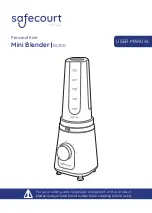
12. Technologies
UBEX series – Matrix Application Mode – User's Manual
178
12. Technologies
UBEX series – Matrix Application Mode – User's Manual
178
MA
TRIX APPLIC
A
TION MODE
Applied F-series endpoint firmware package: v1.4.1 | Applied R-series endpoint firmware package: v1.4.1 | Applied MMU firmware package: v1.2.1 | LDC software: v1.34.0b2
12.4. AV Over IP
12.4.1. Basics
Beside the traditional AV matrix switchers and extenders the AV over IP or networked AV system is the
biggest leading technology in the AV industry. The spreading of the technology speeds up the general
increasing of the using of the IT-related devices and equipment all around the world - from the offices to the
homes.
The main difference compared with the traditional AV technologies is the method of the signal transmission:
the networked AV transmitter/encoder devices convert the video signal to TCP/IP packets and transfer them
to the receivers/decoders. The interface of the transmission can be CATx or fiber optical cable depending on
the signal bandwidth and the distance between the source and sink devices.
12.4.2. What is TCP/IP?
DEFINITION:
TCP/IP, or the Transmission Control Protocol/Internet Protocol, is a suite of communication
protocols used to interconnect network devices on the Internet or in a private network.
TCP/IP specifies how data is exchanged over the network by providing end-to-end communications that
identify how it should be broken into packets, addressed, transmitted, routed and received at the destination.
TCP/IP requires little central management, and it is designed to make networks reliable, with the ability to
recover automatically from the failure of any device on the network. *
The two main protocols in the Internet protocol suite serve specific functions. TCP defines how applications
can create channels of communication across a network. It also manages how a message is assembled
into smaller packets before they are then transmitted over the Internet and reassembled in the right order at
the destination address. *
IP defines how to address and route each packet to make sure it reaches the right destination. Each gateway
computer on the network checks this IP address to determine where to forward the message. *
* Source:
https://searchnetworking.techtarget.com/definition/TCP-IP
12.4.3. Link Aggregation Protocol
The UBEX endpoints use Link Aggregation Control Protocol (LACP) to share equally the signal bandwidth of
the streams between the two the SFP+ ports.
DEFINITION:
The
Link Aggregation Group
(LAG) applies to various methods of combining (aggregating)
multiple network connections in parallel in order to increase throughput beyond what a single connection
could sustain.
The measurement of the bandwidth is happened with two different method on the two interfaces:
▪
HDMI pipes: the peak bandwidth is measured which is the summary of the video burst (horizontal (H)
blanking and vertical (V) blanking).
▪
SFP+ links: the average bandwidth is measured.
Example for the Link Aggregation Protocol
Example for the working of the LACP
12.4.4. Multicast DNS (mDNS) Protocol
The multicast DNS (mDNS - (multicast Domain Name System) protocol resolves host names to IP
addresses within small networks that do not include a local name server. It is a zero-configuration service,
using essentially the same programming interfaces, packet formats and operating semantics as the unicast
Domain Name System (DNS). *
The primary benefits of using mDNS is that it requires little or no administration to set up. Unless the network
is specifically configured to not allow mDNS, UBEX sources will be discovered. This format works when no
infrastructure is present and can span infrastructure failures.
* Source:
https://en.wikipedia.org/wiki/Multicast_DNS
















































